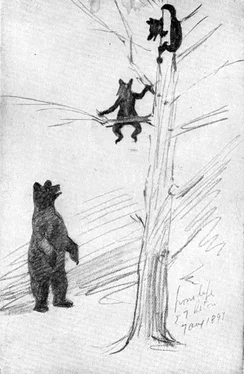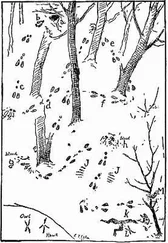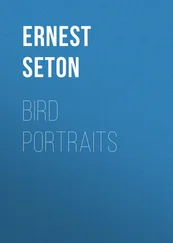Ernest Seton - Wild Animals at Home
Здесь есть возможность читать онлайн «Ernest Seton - Wild Animals at Home» весь текст электронной книги совершенно бесплатно (целиком полную версию без сокращений). В некоторых случаях можно слушать аудио, скачать через торрент в формате fb2 и присутствует краткое содержание. Год выпуска: 2009, Жанр: Природа и животные, на английском языке. Описание произведения, (предисловие) а так же отзывы посетителей доступны на портале библиотеки ЛибКат.
- Название:Wild Animals at Home
- Автор:
- Жанр:
- Год:2009
- ISBN:нет данных
- Рейтинг книги:5 / 5. Голосов: 1
-
Избранное:Добавить в избранное
- Отзывы:
-
Ваша оценка:
- 100
- 1
- 2
- 3
- 4
- 5
Wild Animals at Home: краткое содержание, описание и аннотация
Предлагаем к чтению аннотацию, описание, краткое содержание или предисловие (зависит от того, что написал сам автор книги «Wild Animals at Home»). Если вы не нашли необходимую информацию о книге — напишите в комментариях, мы постараемся отыскать её.
Wild Animals at Home — читать онлайн бесплатно полную книгу (весь текст) целиком
Ниже представлен текст книги, разбитый по страницам. Система сохранения места последней прочитанной страницы, позволяет с удобством читать онлайн бесплатно книгу «Wild Animals at Home», без необходимости каждый раз заново искать на чём Вы остановились. Поставьте закладку, и сможете в любой момент перейти на страницу, на которой закончили чтение.
Интервал:
Закладка:
These animals love the sunshine, the warmth and the daylight, and dread cold and darkness as much as we do. It must have been a bitter experience when at the call of the older ones every little Coney had to tumble out of his warm bed in the chill black hours and face the driving sleet to save the winter's supplies. But tumble out they did, and overtime they worked, hard and well, for when the morning dawned the slide-rock and the whole world was covered deep in snow, but every haycock had been removed to a safer place under the rocks, and the wisdom of the Coney once more exemplified, with adequate energy to make it effective.
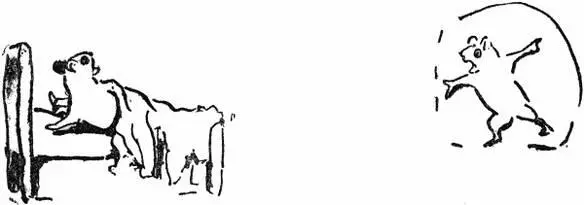
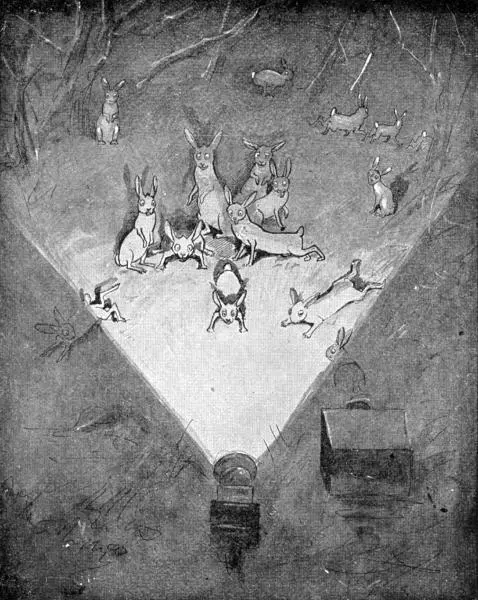
XXXI. Snowshoe Rabbits fascinated by the lantern
Sketched in the Bitterroot Mts. by E. T. Seton

XXXII. The Ghost Rabbit
Sketch by E. T. Seton
HIS SAFETY IS IN THE ROCKS
No one has ever yet found the home nest of the Calling Hare. It is so securely hidden under rocks, and in galleries below rocks, that all attempts to dig it out have thus far failed. I know of several men, not to mention Bears, Badgers, Wolverines, and Grizzlies, who have essayed to unearth the secret of the Coney's inner life. Following on the trail of a Coney that bleated derisively at me near Pagoda Peak, Col., I began at once to roll rocks aside in an effort to follow him home to his den. The farther I went the less satisfaction I found. The uncertain trail ramified more and more as I laboured. Once or twice from far below me I heard a mocking squeak that spurred me on, but that too, ceased. When about ten tons of rock had been removed I was baffled. There were half a dozen possible lines of continuation, and while I paused to wipe the "honest sweat" from my well-meaning brow, I heard behind me the "weak," "weak," of my friend as though giving his estimate of my resolution, and I descried him—I suppose the same—on a rock point like a moss-bump against the sky-line away to the left. Only, one end of the moss-bump moved a little each time a squeak was cast upon the air. I had not time to tear down the whole mountain, so I did as my betters, the Bears and Badgers have done before me, I gave it up. I had at least found out why the Coney avoids the pleasant prairie and the fertile banks, and I finished with a new and profounder understanding of the Scripture text which says in effect, "As for the Coney, his safe refuge is in the rocks."
FOOTNOTES:
[C] It proved later to be an albino domestic Rabbit run wild.
X
Ghosts of the Campfire
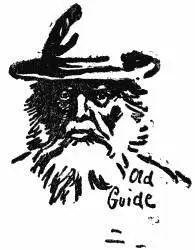
It is always worth while to cultivate the old guides. Young guides are often fresh and shallow, but the quiet old fellows, that have spent their lives in the mountains, must be good or they could not stay in the business; and they have seen so much and been so far that they are like rare old manuscript volumes, difficult to read, but unique and full of value. It is not easy to get them to talk, but there is a combination that often does it. First, show yourself worthy of their respect by holding up your end, be it in an all-day climb or breakneck ride; then at night, after the others have gone to bed, you sit while the old guide smokes, and by a few brief questions and full attention, show that you value any observations he may choose to make. Many happy hours and much important information have been my reward for just such cautious play, and often as we sat, there flitted past, in the dim light, the silent shadowy forms of the campfire ghosts. Swift, not twinkling, but looming light and fading, absolutely silent. Sometimes approaching so near that the still watcher can get the glint of beady eyes or even of a snowy breast, for these ghosts are merely the common Mice of the mountains, abounding in every part of the West.
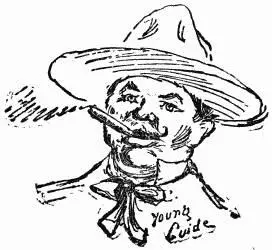
There are half a dozen different kinds, yet most travellers will be inclined to bunch them all, and pass them by as mere Mice. But they are worthy of better treatment. Three, at least, are so different in form and ways that you should remember them by their names.
First is the Whitefooted or Deer-mouse . This is the one that you find in the coffee pot or the water bucket in the morning; this is the one that skips out of the "grub box" when the cook begins breakfast; and this is the one that runs over your face with its cold feet as you sleep nights. It is one of the most widely diffused mammals in North America to-day, and probably the most numerous.
It is an elegant little creature, with large, lustrous black eyes like those of a Deer, a fact which, combined with its large ears, the fawn-coloured back, and the pure white breast, has given it the name of "Deer-mouse." It is noted for drumming with one foot as a call to its mate, and for uttering a succession of squeaks and trills that serve it as a song.
Sometimes its nest is underground; and sometimes in a tree, whence the name Tree-mouse. It breeds several times in a year and does not hibernate, so is compelled to lay up stores of food for winter use. To help it in doing this it has a very convenient pair of capacious pockets, one in each cheek, opening into the mouth.
THE JUMPING MOUSE
He glides around the fire much as the others do, but at the approach of danger, he simply fires himself out of a catapult, afar into the night. Eight or ten feet he can cover in one of these bounds and he can, and does, repeat them as often as necessary. How he avoids knocking out his own brains in his travels I have not been able to understand.
This is the New World counterpart of the Jerboa, so familiar in our school books as a sort of diminutive but glorified kangaroo that frequents the great Pyramids. It is so like a Jerboa in build and behaviour that I was greatly surprised and gratified to find my scientist friends quite willing that I should style it the American representative of the African group.
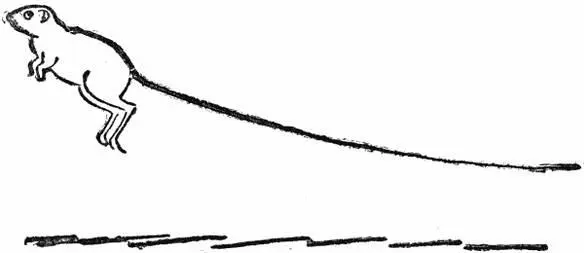
The country folk in the East will tell you that there are "seven sleepers" in our woods, and enumerate them thus: the Bear, the Coon, the Skunk, the Woodchuck, the Chipmunk, the Bat, and the Jumping Mouse. All are good examples, but the longest, soundest sleeper of the whole somnolent brotherhood is the Jumping Mouse. Weeks before summer is ended it has prepared a warm nest deep underground, beyond the reach of cold or rain, and before the early frost has nipped the aster, the Jumping Mouse and his wife curl up with their long tails around themselves like cords on a spool, and sleep the deadest kind of a dead sleep, unbroken by even a snore, until summer is again in the land, and frost and snow unknown. This means at least seven months on the Yellowstone.
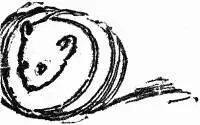
Интервал:
Закладка:
Похожие книги на «Wild Animals at Home»
Представляем Вашему вниманию похожие книги на «Wild Animals at Home» списком для выбора. Мы отобрали схожую по названию и смыслу литературу в надежде предоставить читателям больше вариантов отыскать новые, интересные, ещё непрочитанные произведения.
Обсуждение, отзывы о книге «Wild Animals at Home» и просто собственные мнения читателей. Оставьте ваши комментарии, напишите, что Вы думаете о произведении, его смысле или главных героях. Укажите что конкретно понравилось, а что нет, и почему Вы так считаете.
